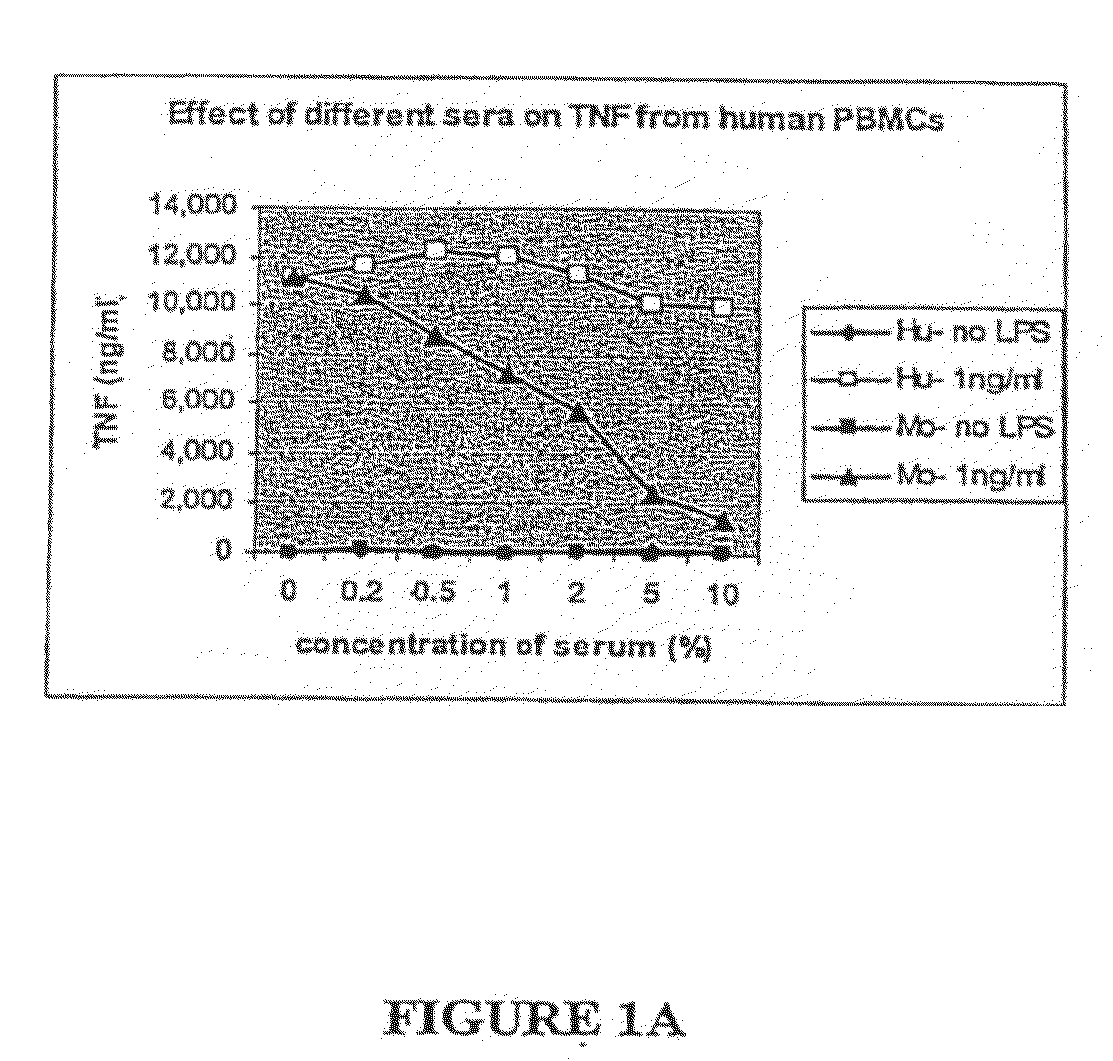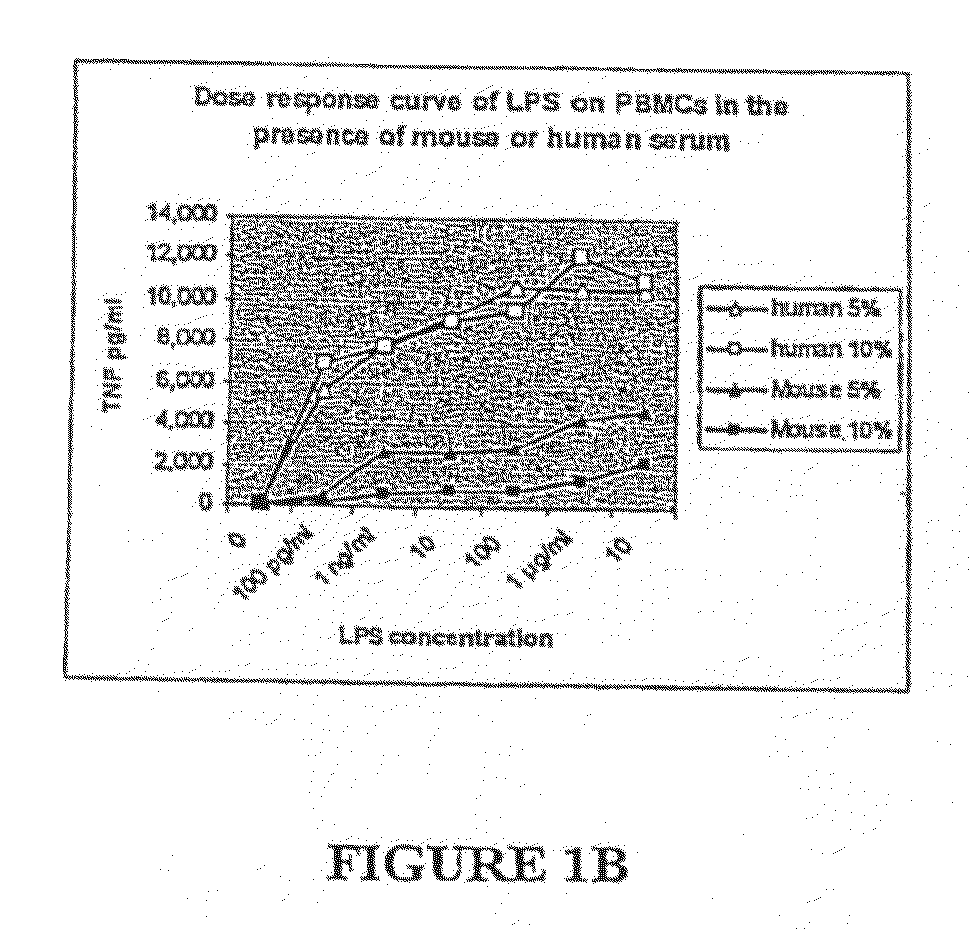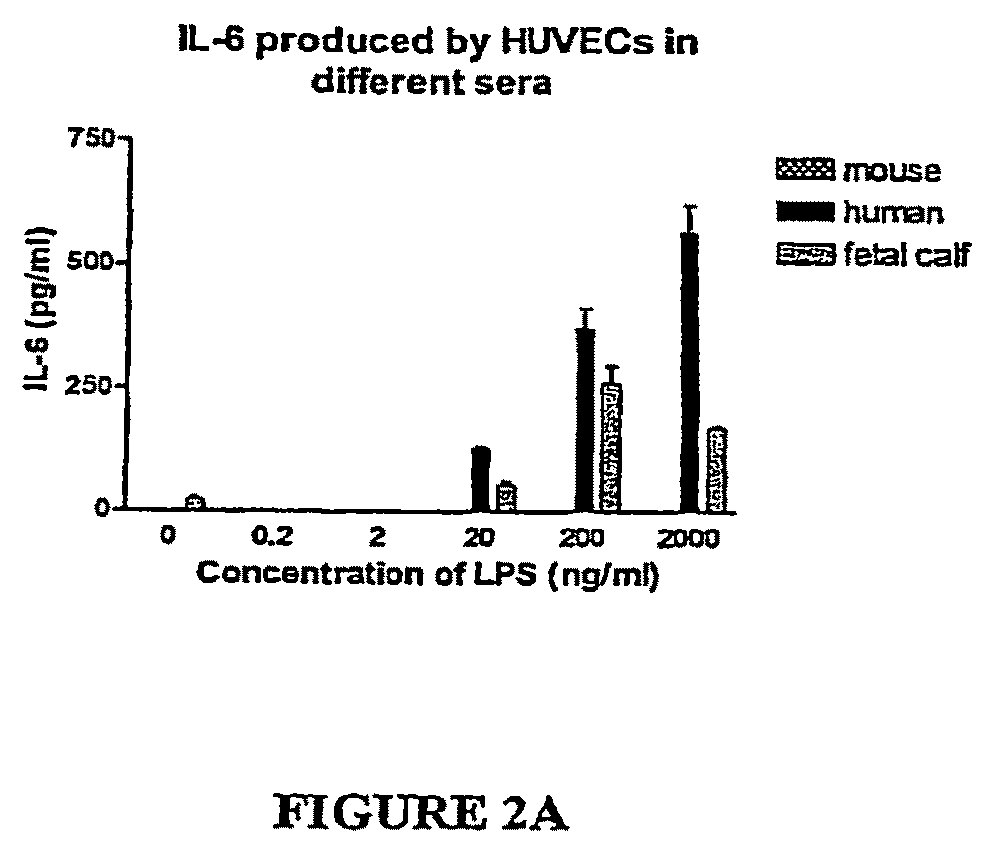Inflammation-Inhibitory Serum Factors and Uses Thereof
a technology of inflammation-inhibitory serum factors and serum factors, which is applied in the field of using serum factors with inflammation-inhibitory activity, can solve the problems of serious autoimmune diseases, and achieve the effect of suppressing an inflammatory response and better in vitro models
- Summary
- Abstract
- Description
- Claims
- Application Information
AI Technical Summary
Problems solved by technology
Method used
Image
Examples
example 1
Mice and Humans Exhibit Different Sensitivities to LPS
[0080]Very little TNF or IL-6 is made in the whole blood of mice as compared to in human whole blood after ex vivo stimulation with LPS. Mouse and human sera neutralize LPS equally as assessed by the Limulus Amoebocyte Lysate assay, and mouse serum and decomplemented mouse serum markedly suppresses LPS-induced cytokines from human monocytes. Sera from LPS-resistant species (e.g., mouse, baboon, and chicken) but not sera from LPS-sensitive species (e.g., human, fetal calf) suppress production of TNFα from mouse macrophages. The suppression of macrophages is not limited to LPS, but extends to many PAMPs. Mouse and baboon serum facilitate mouse macrophages to produce IL-10. Serum from LBP KO and CD14 KO mice also suppress induction of TNF from monocytes. Mouse serum inhibits IL-6 and IL-8 production from human umbilical vein endothelial cells. The suppression of cytokines induced by mouse serum is not due to cellular toxicity. Expos...
example 2
The Effects of Serum from Other Species
[0113]Despite the known differences in LPS susceptibility between species, two commonly used animal models for LPS research are rodents and baboons, both LPS-resistant species. Multiple strategies for treating sepsis in experimental models may have had disappointing results in humans, an LPS-sensitive species, because of this difference. The use of more sensitive animals, such as rabbits or sheep, might therefore be a more reliable model to study sepsis pathology.
Lethal Dose 50
[0114]Lethality rather than other LPS induced effects in vivo, e.g., changes in body temperature or cardiac symptoms, were studied. To quantify the lethal effects of LPS in different animals, literature references for LD50 doses were used where available. A search on MEDLINE (database publicly available at the website of the National Center for Biotechnology Information (NCBI), Bethesda, Md.) was performed to find the 50% lethality dose (LD50) for LPS for the following an...
example 3
Purification of an Inflammation Response Modulator
[0131]Protein purification techniques involving a chromatofocusing step together with a cell based assay of LPS-induced TNF production may be used to purify the TNFα production-inhibiting substance from serum, e.g., mouse serum. The assay system may readily be optimized for sensitivity, rapid turn-around time, and ease. In particular, the active inhibitory fractions may be separated into fractions using chromatofocusing of a 40-60% ammonium sulfate precipitation, as described below. Samples can be studied by SDS-PAGE and, if necessary, by two-dimensional analysis. Candidate protein fractions are assessed by mass spectrometry and / or microsequenced and the results are compared to known and predicted sequences, including mouse sequences.
Exposure of Mouse Serum to Trypsin Removes all Inhibitory Activity, Indicating that the Inhibitory Substance is a Protein
[0132]To determine whether the active compound(s) in mouse serum may be a protein,...
PUM
| Property | Measurement | Unit |
|---|---|---|
| temperature | aaaaa | aaaaa |
| temperature | aaaaa | aaaaa |
| concentrations | aaaaa | aaaaa |
Abstract
Description
Claims
Application Information
 Login to View More
Login to View More - R&D
- Intellectual Property
- Life Sciences
- Materials
- Tech Scout
- Unparalleled Data Quality
- Higher Quality Content
- 60% Fewer Hallucinations
Browse by: Latest US Patents, China's latest patents, Technical Efficacy Thesaurus, Application Domain, Technology Topic, Popular Technical Reports.
© 2025 PatSnap. All rights reserved.Legal|Privacy policy|Modern Slavery Act Transparency Statement|Sitemap|About US| Contact US: help@patsnap.com



